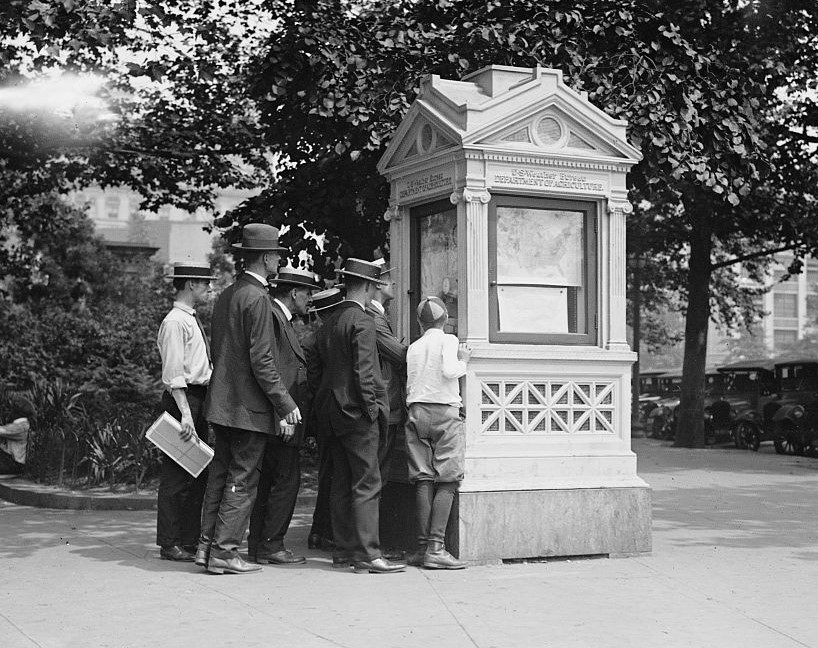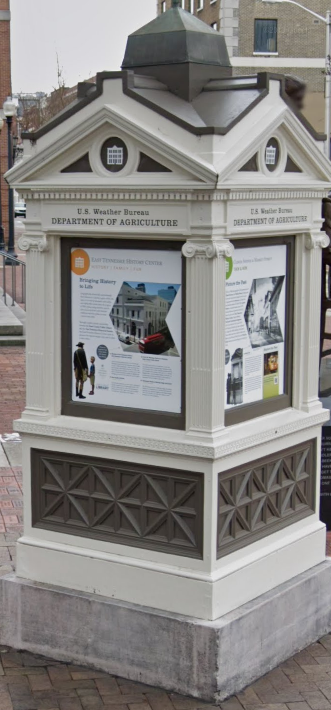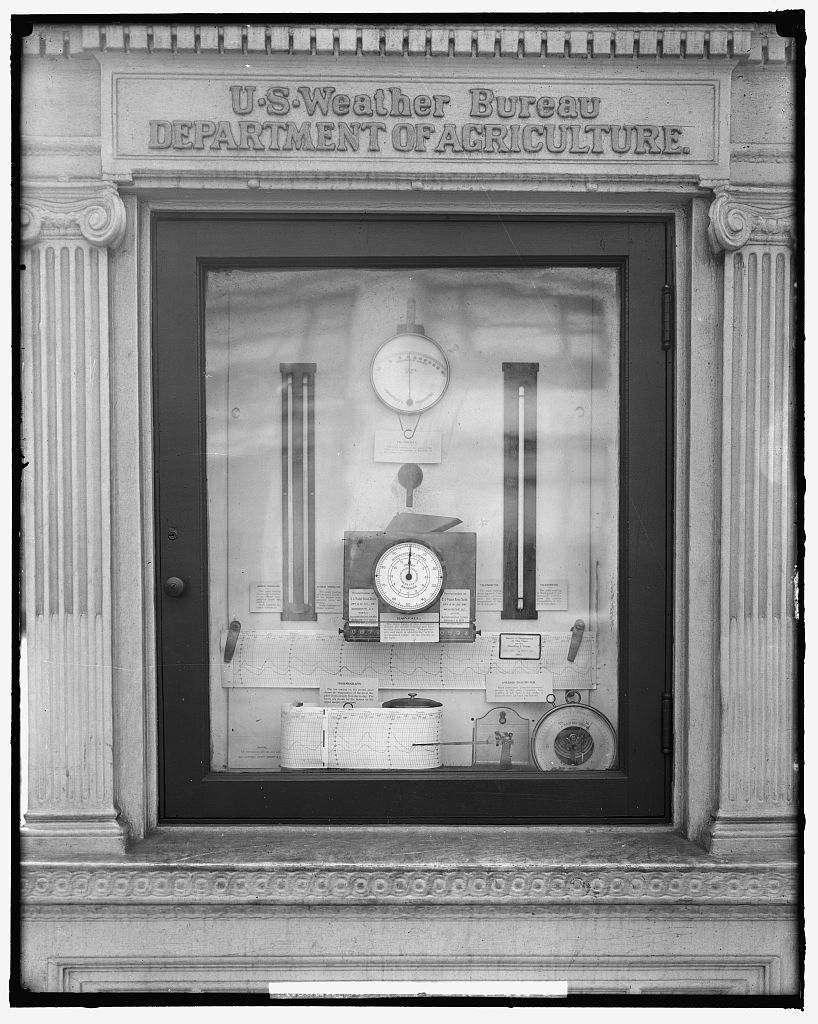The Tale of the Weather Bureau Kiosk - National Weather Service Heritage

The Tale of the Weather Bureau Kiosk
By Chris Geelhart (Chris.Geelhart@noaa.gov)Weather Bureau kiosk in downtown Washington, D.C., in 1923 (Library of Congress photo)
Over the course of the 150 year history of the National Weather Service and its predecessors, numerous methods have been used to distribute the forecast. Early efforts involved signal flags and the U.S. mail. However, more detailed and timely methods were needed.


Library of Congress photo
In 1908, Professor Charles F. Marvin, of the Weather Bureau’s Instrument Division (and later the chief of the Weather Bureau), designed a shelter called a “weather kiosk.” The kiosk was 7 feet high, 4 feet square, and had four 30-inch panels on each side. It contained weather maps and forecast information, as well as instruments for measuring high and low temperature, current temperature and humidity, and rainfall. Several dozen kiosks were placed at favorable locations in the central district of larger towns and cities that had Weather Bureau offices. Staff members of the offices would update the maps and forecasts at the kiosk daily.
The kiosks proved popular with the public, but eventually started to cause confusion and distrust. Being within the center of a city, with abundant buildings and concrete around it, the temperature information was prone to running warmer than the “official” temperature. Compounding the problem, the kiosk was only ventilated from the bottom, so the warm air rising from the ground had no way to escape. There was no good way to redesign it while still protecting the contents from weather and vandals. The kiosk in Washington, D.C., was in an especially unfavorable location, and its measurements over time became widely distrusted.
By 1931, the Weather Bureau had phased out about half of its kiosks before officially adopting the policy of eliminating them nationwide. The Washington Post shed no tears at this news, running a headline on September 24, 1931, stating “Kiosk called liar and held guilty of false advertising.”
The last remaining kiosk (though not in use as such) is located in Knoxville, Tennessee, at the corner of Clinch and Market Streets. It originally was at the Old Customs House (the city’s first Federal building), where the Weather Bureau office was located at the time. It later found a new life at a local cemetery, posting funeral notices. In 2007, it was moved back to its original home, now known as the East Tennessee History Center. NOAA’s Heritage Funding Program awarded a grant in 2019 to preserve the kiosk. Staff members of the Weather Forecast Office at Morristown, Tennessee, are leading this effort.
